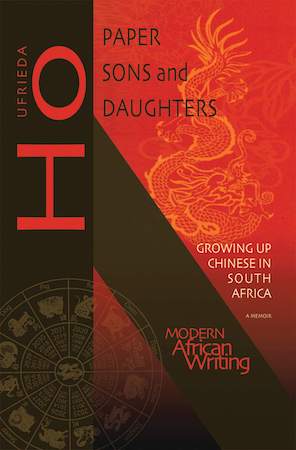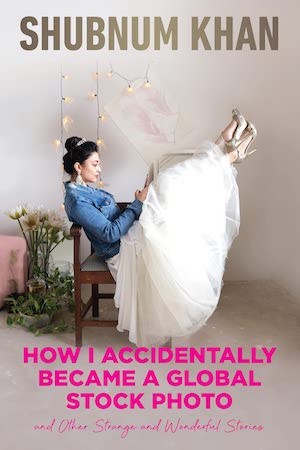At some point you’ve likely read about swashbuckling explorers or intrepid sea-farers who’d made arduous but gutsy journeys into the vast dark unknowns, to sniff out spices, unearth precious metals, or to fight for their freedoms. The Americas, Asia, Australia, Africa—we have almost certainly once read (and learnt)—were discoverable.
With a growing sense of clarity, we understand how solipsistic these readings actually are, vanishing the lives of the people who were on already-occupied lands. And as history is perceived through ever-widening lenses, the past’s narratives necessarily shift, altering how we understand the present and the future. Literature opens to tell these tales. Take for instance changing perceptions of the recent African-Sino relationship: the former is not one country but 54 separate countries, and, interactions between continental Africa and China are anything but new.
My novel How to Be a Revolutionary is set in contemporary Shanghai and stretches into previous decades to delve into the lives of characters Zhao, Beth and the beloved American poet, Langston Hughes who—while living in seemingly unrelated worlds—are more closely bound than they can know. There are many more ways to read about Chinese and African interactions, and at the personal level, as well as the geo-political. Here are just seven:
The Dragonfly Sea by Yvonne Adhiambo Owuor
Yvonne Adhiambo Owuor writes long, languorous sentences with enough room to get lost in. Owuor’s second book The Dragonfly Sea draws a picture of Pate, off the coast of Kenya, that offers an experience that is at once vicarious and visceral (as the author did in her first epic novel, Dust).
The Dragonfly Sea tells the story of Ayaana who is amongst the distant progeny of a Chinese sailor who, centuries earlier, were shipwrecked during Zheng He’s exploration of the African coast (likely predating much Portuguese engagement with the continent). These shipwrecked sailors integrated with the local population. Ayaana is elected to carry the glory, but also the burden, of the genetic link between Kenya and China. The offer of a scholarship to study in China is accepted gratefully, but brings its own complications. Nonetheless, it sets off Ayaana’s own journey of discovery to China and Turkey and into her own, often troubled, existence.

Paper Sons and Daughters: Growing up Chinese in South Africa by Ufrieda Ho
“I lie on the lap of a giant pink teddy bear and stare up at a galaxy of full stops in the perforated canopy of my dad’s old Cortina.”
So begins Ufrieda Ho’s exquisite memoir of her life growing up as the child of Chinese immigrants to South Africa. Was she Chinese or was she South African? Both, actually, but neither entirely. It is a dominant theme throughout the book: this sense of being caught between worlds and cultures. During apartheid, being Chinese in South Africa meant being a second-class citizen, yet also offered a degree of invisibility and thus defended against apartheid’s harshest laws, reserved for its Black citizens.
One of the book’s most moving stories’ is that of Ho’s father, who stowed-away aboard a ship headed for South Africa. In the new country, her father must buy an identity from an already established family, making him a paper son (as many did). To earn a living, he becomes a fahfee runner—an illegal gambling game, especially popular in Black townships where he becomes “ma-China.” Though his career brings rewards and a degree of shame, it offers the family a life in South Africa that is retold with considerable warmth.

All Under Heaven by Darryl Accone
South African arts and culture critic Darryl Accone writes of another family that came to the country in search of fortune. A compelling work of auto-fiction, Accone recounts the lives of three generations of his Chinese family in South Africa. It begins with a journey from Sha Kiu village in southern China in 1911, via Hong Kong, to ultimately seek wealth in Johannesburg. Accone writes of the Chinese countryside with poetic weight:
“there was more and more: mountains with strange shapes, rivers that ran yellow, gorges so deep that sunlight never touched their depths.”
These descriptions evoke a sense of longing for an ancestral home, pulling at the very notion of homeland. Here too, there is a sense of ambivalence: South African or Chinese? Accone writes forcefully about the humiliations as the absurd apartheid laws are implemented:
“But what kind of country will these children inherit when they grow up? Look at things today. We can’t own houses anywhere. Our children need permits to attend private schools. We can’t stay in hotels because of the liquor act. We can’t have a drink in hotel bars or lounges, though ‘foreign Chinese’ can.”
A Casualty of Power by Mukuka Chipanta
A Casualty of Power, by Zambian writer (and aerospace engineer) Mukuka Chipanta, is amongst the earlier novels (in a burgeoning arena) to explore the contemporary link between China and an African country. The story is set on a Zambian Copperbelt mine, where an incident of labor unrest leads to a horrific act of violence. Neither come off well: the Chinese supervisors far from home and immersed in a new country and culture—often portrayed as reverting to exploitation, if not outright bias against their African labor force, nor the African government officials, who sell off the mines cheaply, choosing personal gain over societal benefit.
At the core of the story is Hamoonga Moya, whose every initiative and dream are thwarted because of widespread dysfunction. While the novel sometimes leans towards an anthropological telling of Moya’s life, and the Chinese accents slide into caricature, it is a powerful rebuke of both the government’s complicities in the misuse of resources and lack of accountability.
China’s Second Continent by Howard W. French
Howard French is a Columbia University journalism professor and previously a New York Times senior journalist and foreign correspondent (he has been bureau chief in several places, including Shanghai). French has spent considerable time traversing or living in cities around the globe, and speaks several languages, including Mandarin, fluently. In many ways, he is uniquely placed to write this book. The title, China’s Second Continent, gives it away. French writes:
“The totemic statistic thrown around about recent Chinese migration to the continent even though it had no firm source, was one million over the last decade. The Chinese government’s statistic about the country’s involvement with Africa were in fact both sparse and vague. High on my list of priorities was an attempt to determine if that number was roughly accurate.”
Through a series of compelling encounters across Africa, French zeros in on the motives of Chinese migrants—not just the faceless economic machine, but the individuals at the forefront (or frontier). French’s fluency in Mandarin enables him to get close enough to ask pertinent questions. This makes for reading which is not always comfortable as cultural misunderstandings, stereotypes, and open racism is laid bare.

How I Accidentally Became a Global Stock Photo by Shubnum Khan
Shubnum Khan is a South African writer whose face has advertised products and services around the world: skin-lightening creams, carpets, dentistry and so on, without her express knowledge or any payment, since she unwittingly signed away the rights to her image as a student. In her quirky book of essays, How I Became a Global Stock Photo, she documents a multitude of strange and endearing incidents during her travels.
In an essay set in Shanghai, the author is invited to a party that she knows little about. “Angry with the world” the day of the event, she goes along anyway, only to find herself at a wedding party where the all-women guests are invited to pick from a rail of gorgeous white gowns, have their faces and hair done, treated to prawns and cakes. Odd yes, but her short essay also illuminates something interesting about Shanghai. Perhaps it is a “strange city,” but it is also a place for wild dreams and chances, a city with a flair for overstatement and the peculiar. Khan never does say if photographers documented the party, but from the picture of the very photogenic Khan in a wedding gown, she is likely selling dresses somewhere.
Stories of the Sahara by Sanmao
First published in 1976, Stories of the Sahara is an anomaly, having sold over 15 million copies (including in Mandarin, Japanese, and Spanish, while the first English translation only appeared in 2020). Writer Sanmao—whose real name was Chen Ping—was born in China in 1943 and with her parents, left for Taiwan at the age of six.
Her Stories of the Sahara takes place in what was once called Spanish Sahara. At the time, the Western Sahara was under Spanish colonial rule (since decolonization, Morocco has laid claim to most of the territory). The collection of essays has inspired millions of travellers across Asia to follow Sanmao’s peripatetic journey. It found an audience just as China was opening to the rest of the world and travel was becoming a reality, and when Taiwan was in the throes of its economic boom. Sanmao’s real allure as a writer is to be found in her independence and fierceness of spirit, her rejection of tradition and perhaps too, the tragedy of her life. Sanmao took her own life at the age of 47. The work endures.
The post 7 Books About the Complex Relationship Between Africa and China appeared first on Electric Literature.
Source : 7 Books About the Complex Relationship Between Africa and China










